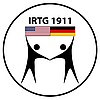associated project E4 (2018 - ): INLEISH – Immunometabolic Networks in the Regulation of Visceral Leishmaniasis
Visceral leishmaniasis is a vector-borne disease caused by the protozoan parasite Leishmania donovani with 50.000 to 90.000 new cases worldwide each year (WHO, 2017). L. donovani is an obligatory intracellular parasite residing in phagocytic cells of innate immune system such as neutrophils and macrophages. Emerging evidence indicates that innate immune cells tightly coordinate their metabolic program with the carbon and bioenergetics needs to support the immunological functions in response to pathogens. This metabolic adaption requires energy and precise control of cellular metabolic pathways consuming glucose, fatty acids or amino acids. Perturbed metabolic fluxes imply decisive effects on immune cells activation eventuating in their ability to control a pathogen and the disease inflicted by it. During infection L. donovani hijacks host metabolic pathways to fuel its growth and persistence. Nevertheless, Leishmania mediated modulation of host cell metabolism and its impact on effector functions is poorly understood. We aim to elucidate the immunometabolic network regulating the innate immune response to Leishmania that play a crucial role in defining susceptibility to infection. A working hypothesis of INLEISH is that infection with L. donovani results in a polarization of host macrophages toward a M2-like anti-inflammatory phenotype which will enable and support the intracellular survival and multiplication of the parasites. Within the INLEISH consortium, the PhD student Mareike Ohms in the group headed by Prof. Tamás Laskay aims to shed light on the phenotype of neutrophils which supports the survival of the parasites. For a long time neutrophils were considered as a homogeneous population of mature and differentiated cells. Recent findings, however, revealed the existence of distinct neutrophil subpopulations and challenge the concept that mature neutrophils have limited plasticity. In this context especially the identification of tumor-associated neutrophils (TANs) is appreciable as neutrophils infiltrating tumors are not mere bystanders but can drive or prohibit tumor progression based on their polarization. Depending on the phenotype displayed by TANs, they are classified as N1 or N2 neutrophils. Similarly to M2 macrophages, N2 neutrophils display an anti-inflammatory and pro-tumorigenic function. We propose that also the parasite L. donovani is able to polarize infected neutrophils towards a N2-like phenotype to induce immunosuppression and to guarantee optimal conditions for its survival.
Aims:
1. Metabolic analysis and anti-leishmanial capacity of primary human neutrophils after infection with L. donovani.
2. In vitro polarization of human neutrophils towards the N1 and N2 phenotype.
3. Metabolic analysis and anti-leishmanial capacity of polarized neutrophil populations after infection with virulent L. donovani.





